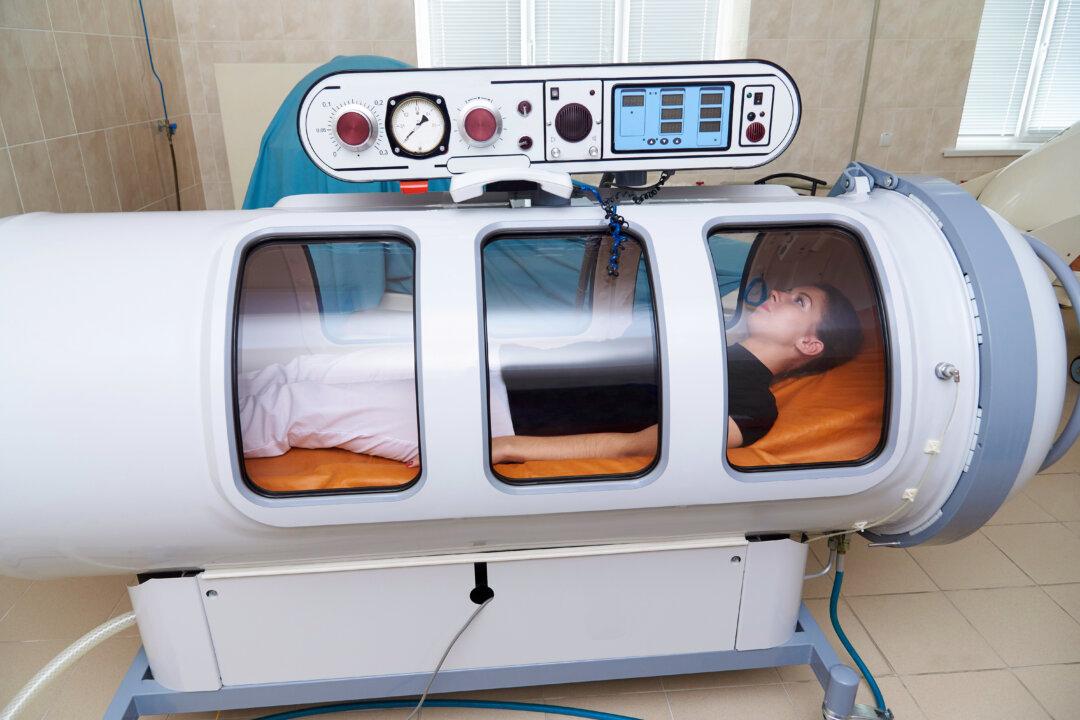Breakthroughs in scientific research and a growing body of
evidence show that an oral probiotic strain, Streptococcus salivarius K12, can help protect against bacterial infections of the respiratory tract caused by COVID-19 and other respiratory viruses, making it a new weapon in the fight against infectious disease.
Alternative therapies and protections are necessary because of the incomplete protection offered by COVID-19 vaccines, which fail to
block infection or prevent transmission and may
cause vaccine injury, including death.
The oral probiotic strain Streptococcus salivarius K12 works by crowding out bad bacteria and stopping their ability to colonize our bodies. This is part of the nature of how human beings relate to the microbial world. Health often depends on hosting a preponderance of beneficial bacteria that can preempt an invasion of pathological bacteria while simultaneously carrying out important roles in the body. New studies have also found that Streptococcus salivarius K12 has antibacterial and antiviral properties and stimulates substances that kill or inhibit the growth of various bacterial species, disabling the reproduction of pathogenic bacteria on the
oropharyngeal mucus surfaces in the mouth and the pharynx.
The Bacterial Factor
For a majority of people, current COVID-19 variants
present with mild cold- or flu-like symptoms including low fever, fatigue, and dry cough. The severe cases, which are less common, present with dyspnea (difficulty breathing) that can rapidly deteriorate into serious complications, such as acute respiratory distress syndrome.
Story continues below advertisement
Research has shown that secondary bacterial infections in COVID-19 patients are significant contributors to fatal infections. In other words, the virus opens a gateway to a more dangerous bacterial infection.
A
study done in Wuhan, China, published in Frontiers in Microbiology in July 2021, found that bacterial infections (bacteremia and pneumonia) were more common in fatal COVID-19 cases.
The National Institutes of Health noted that in the 1918 Spanish flu pandemic, upward of 95 percent of mortality was directly attributable to secondary bacterial pneumonia.
Also, during the outbreaks of SARS (severe acute respiratory syndrome) in 2003 and H1N1 influenza in 2009,
bacterial complications were associated with serious outcomes such as death and admission to intensive care. During the 2009
influenza pandemic specifically, almost one in four patients presented with bacterial complications.
Story continues below advertisement
A
study conducted between April and June 2020, published in Environmental Research and Public Health in February 2022, stated that bacterial colonization increased the length of ICU hospitalization and the mortality rate, with 53 percent of ICU-admitted COVID-19 patients having bacterial infections. They advised that clinical management of COVID-19 patients should also consider the assessment of co-infections so that treatment for both COVID-19 and bacterial infection can be administered.
Between January and February 2020, a
study was conducted in Wuhan, China, to investigate the benefits of the oropharyngeal probiotic strain Streptococcus salivarius K12 in preventing respiratory tract infections in frontline medical staff who were in close contact with COVID-19 hospitalized patients.
It found that “oropharyngeal probiotic administration significantly reduced the incidence of respiratory tract infections by 64.8 percent, reduced the time experiencing respiratory tract infections and oral ulcer symptoms by 78 percent, shortened the days absent from work by 95.5 percent, and reduced the time under medication where there is no record of antibiotic and anti-viral drug intake in the probiotic group.”
It was also noted that there was no intake of steroid/anti-inflammatory drugs in the probiotic group compared with 10 days of intake of steroid/anti-inflammatory drugs in the control group.
Story continues below advertisement
The results of this study indicate that the oropharyngeal probiotic formula containing Streptococcus salivarius K12 “can reduce susceptibility to respiratory tract infections for frontline medical staff fighting against COVID-19.”
Only one out of 98 enrolled medical staff in the probiotic group had the pneumococcal vaccine, and four out of 98 had the influenza vaccine, while one out of 95 in the control group had received the pneumococcal vaccine and four out of 95 had received the influenza vaccine. The two groups had no statistically significant differences in vaccination status and outcomes.
The study was published in Frontiers in Bioengineering and Bio Technology in June 2021 and was peer-reviewed by Stephen A. Morse, a senior consultant at the Centers for Disease Control and Prevention (CDC). Yet the CDC’s
guidelines don’t seem to reflect the findings, instead focusing solely on vaccines and the
unapproved investigational medicine Paxlovid.
In May 2022, a
study confirmed that the intake of the oropharyngeal Streptococcus salivarius K12 as a dietary intervention can effectively reduce episodes of upper respiratory tract infections in children. Those in the probiotic group experienced 68 percent fewer days of onset of respiratory symptoms than the control group.
Story continues below advertisement
The most recent
study of the probiotic, published in Probiotics and Antimicrobial Proteins in December 2022, found that Streptococcus salivarius K12 evokes an immunological response in the oral cavity—an effect that may contribute to the protection of the host against certain viral infections. The study states, “This is the potential for application as a short-term cross-protective (‘priming’) activity against viral infections initiating within the oral cavity.”
The Oral Microbiome
The importance of our gut microbiome is fairly common knowledge these days—but the lesser-known
oral microbiome, also referred to as the oropharyngeal microbiome, may hold the key to viral and bacterial infection prevention.
The oral cavity houses the second-largest
microbiome in the human body and is made up of distinct communities of bacteria, fungi, viruses, archaea, protists, and other microorganisms, whose compositions are dependent upon environmental conditions that change daily based on multiple factors.
The association between the microbiome and health has been documented in key concepts in ancient medical systems such as
ayurveda and
traditional Chinese medicine for thousands of years, but it was first “
discovered” in Western science in the 1840s.
In 2007, the
Human Microbiome Project began its research to understand the mechanisms governing the similarities and differences in the microbes we share as a population, microbes’ association with diseases, and the functional roles microbiota play in health and disease. The project’s research has been groundbreaking and is ongoing.
Story continues below advertisement
It’s been found that modern practices, including the
use of antibiotics and vaccines, have likely affected the composition and diversity of the human microbiome, and more studies are underway to discover how to leverage natural microorganisms to combat viruses and chronic illness.
The oral microbiome contains one of the most
diverse communities of microbes in the human body, yet this niche was relatively understudied as compared with the gut microbiome. As of 2020, a PubMed search for “oral microbiome” resulted in 746 articles, as compared with 5,605 for “gut microbiome.”
In the past two years, research on the oral microbiome has dramatically increased. A PubMed search of “oral microbiome” at the time of writing this article yielded 102,461 articles, compared with 108,688 “gut microbiome” articles.
According to the expanded
Human Oral Microbiome Database, only 58 percent of oral bacterial species have been officially named, 16 percent have been cultivated yet remain unnamed, and 26 percent are uncultivated.
COVID-19 and the Oral Microbiome
A growing number of studies
show associations between diseases and viruses and changes in the oral microbiome. For example, imbalances in the oral microbiome can
cause gut microbes to produce carcinogenic toxins, triggering gut inflammation and metabolic problems.
Story continues below advertisement
The mouth is an entry point to the respiratory and digestive systems and is highly
vascularized, meaning it has many channels for conveying bodily fluids such as blood. High vascularization of the mouth can
contribute to illness by exacerbating the inflammatory response, which causes vascular changes and leads to low oxygen levels. This can
lead to oral changes associated with endocrine illness
and an increased risk of cardiovascular disease, clogged arteries, stroke, and peripheral vascular disease.
Replication of COVID-19
occurs in the nose and throat and
initially develops as a respiratory infection in the
cells of the nasal cavity and respiratory tract;
95.86 percent of ACE2-positive cells are located on the surface of the tongue (epithelial cells).
A
study published in the journal Nature revealed that COVID-19 might interact with members of the oral microbiome in either the lungs or the oral cavity. Viral
shedding from the nose and mouth is also a major factor in transmission, with
evidence suggesting that the first response on this battleground may help determine who will develop severe disease.
Studies show that lung microbiota is more similar to those in the
oropharynx than those in the
nasopharynx or lower digestive tract. Because of this, the oral microbiome could be a driving force in regulating the immune system in the mouth, which could affect the ability of pathogens to cause infection.
Germ Warfare
Some microbial species live in harmony, and others engage in relentless war. Bacterial
competition in the microbiome is driven by the
fight for resources, such as space, light, and nutrients.
Leveraging this competitive behavior in bacteria by colonizing our oral microbiome with bacteria that are beneficial to the body is one
strategy that microbiologists are finding has potential in virus and infection prevention.
Good bacteria—some of which have been developed into probiotic foods or supplements—are also a good source of antimicrobial molecules that are part of the innate immune response and whose fundamental biological
role is to control pathogenic microorganisms, including negative bacteria, fungi, and viruses.
Antimicrobial molecules are produced as a
first line of defense against invading pathogens and form a foundation for the development of new therapeutics.
Scientific Breakthroughs
Streptococcus salivarius K12, which has been developed as a probiotic for the oral cavity, has been clinically demonstrated to improve the upper respiratory tract microbiota, protecting the host from pathogenic bacteria, fungi, and viruses and thus reducing the incidence of viral respiratory tract infections and bacterial co-infections.
There are currently more than 100 studies on its benefits, and more are underway.
The Frontiers in Bioengineering and Bio Technology study, which primarily investigated the effectiveness of Streptococcus salivarius K12 in preventing respiratory tract infections in frontline medical staff working with COVID-19 patients, found that the oropharyngeal probiotic plays a role in creating a stable upper respiratory tract microbiota capable of protecting the host.
“Its anti-viral capability to build a well-established first-line defense on the upper respiratory tract and oropharyngeal microbiome to protect individuals from respiratory tract infection“ means it could be part of a ”promising strategy to prevent respiratory tract infections,” including those caused by COVID-19, the authors state.
Streptococcus salivarius K12 works in several ways to fight off viral infections.
One is by producing various
salivaricins, a kind of natural antibiotic that pit bacteria against other bacteria. Salivaricins can inhibit the growth of various pathogens by binding to their surface and disrupting their cell membranes. This can help to prevent viral infections from taking hold in the body and shows promising inhibitory activity toward an array of bacterial pathogens.
Streptococcus salivarius K12 also stimulates an
anti-inflammatory response, actively protecting the host against cellular death caused by pathogens. It may also protect host tissues from damage caused by immunostimulatory cells and products.
The probiotic can also compete with pathogenic bacteria for space and nutrients in the host’s oral cavity, which prevents the colonization of viruses and other pathogens.
A recent
study published in December 2022 in Probiotics and Antimicrobial Proteins investigated whether the ingestion and oral cavity colonization by Streptococcus salivarius K12 is associated with the enhancement of IFN-gamma (a protein that affects the immune system) levels in saliva.
The study found that the oral probiotic strain did increase IFN-gamma levels in human saliva within 24 hours of consumption. This increase helps to fight off viruses in several ways:
- Activating other immune cells: IFN-gamma activates immune cells such as macrophages and natural killer cells, which can directly kill virus-infected cells.
- Inducing antiviral genes: IFN-gamma can also induce the expression of genes that produce proteins that inhibit viral replication and spread.
- Enhancing the adaptive immune response: IFN-gamma activates other T cells that play a critical role in the adaptive immune response.
Keeping Our Microbiome Strong
Streptococcus salivarius K12 naturally occurs in a healthy person’s mouth and throat. But the oral microbiome composition can be highly variable among individuals depending on health, lifestyle,
age, and environment.
Smoking, alcohol consumption, hormonal changes,
poor diet, and spicy foods can harm the oral microbiome.
The K12 strain became the first species to be commercially developed as a probiotic, and many high-quality brands market it. Here are two notable brands that have been studied and published in the randomized control trials mentioned in this article:
- The Bactoblis oropharyngeal probiotic formula by Probionet GmbH was used in the Frontiers in Bioengineering and Bio Technology study. There are 31 clinical trials conducted with Bactoblis to date and 10 review or meta-analysis articles mentioning the studies conducted with Bactoblis.
- Blis Probiotics, formulated by BLIS Technologies Ltd., which has completed multiple studies on the product’s anti-inflammatory immune effects and efficacy as an oropharyngeal probiotic. Their most recent clinical trial shows protection of the host against certain viral infections.
Tips on Buying and Taking Oral Probiotics
When buying oral probiotics, there are several things to look for to ensure that you are getting a high-quality product. John Hale, who has a doctorate in microbiology and has been involved in numerous studies, clinical trials, and research on Streptococcus salivarius K12, shared some great tips to keep in mind when purchasing a quality oral probiotic:
- “One important thing to look for is if the company is a member of the International Probiotics Association. Members of the IPA must adhere to guidelines, so you can trust that they are producing safe and effective products.” You can check if a company is a member of the IPA by looking for the association’s logo on the packaging or checking the IPA’s website.
- “It’s important to see the genus, species, and strain name of the bacteria. For example, when buying this specific oral probiotic strain, you want to see ‘Streptococcus salivarius K12.’ This ensures that the company has done research and understands what they are giving you.”
- “The amount of bacteria listed on the packaging is usually not as important as the dose that was found to work in clinical trials and studies. It is important to note that more is not always better. The specific dose that was found to work in the trials and studies on Streptococcus salivarius K12 is 1 billion CFU [colony-forming unit] or greater.”
How often should we take oral probiotics for viral and respiratory tract infection defense? “For upper respiratory infection prevention, you should take a daily dose during peak periods when you are likely to get sick—the winter months, for example,“ Hale said. ”It is also important to take them daily around times you will be in a confined environment with other people.”
Superbugs, Vaccines, and the Antibiotic Apocalypse
Anti-microbial resistance (AMR) is a
global public health crisis that has dramatically increased over the past decade.
The overuse of antibiotics and vaccines can lead to the development of “superbugs”—strains of bacteria and viruses that have evolved to resist the effects of both antibiotics and vaccines. As these superbugs spread, they can become more difficult to treat and can lead to an “antibiotic apocalypse” in which common infections can become deadly.
A
review done on AMR that began in 2014 and was published in 2016 estimated that by 2050, as many as 10 million people could die each year as a result of AMR.
Many felt this number was inflated, because at the time there were about 700,000 deaths per year associated with AMR, but a global analysis of AMR published in
The Lancet in January 2022 estimated that 4.95 million deaths were associated with AMR in 2019.
Fortunately, many types of bacteria that live on and in our bodies that are harmless to us produce bacteriocins that may be of great value in the development of novel antibacterial therapies.
Administration of Streptococcus salivarius K12 is a promising strategy to protect individuals during the outbreak of seasonal or emerging respiratory infectious diseases and to mitigate an emerging worldwide public health crisis.
References:
https://www.nature.com/articles/s41368-022-00163-7
xhttps://pubmed.ncbi.nlm.nih.gov/30526505/








